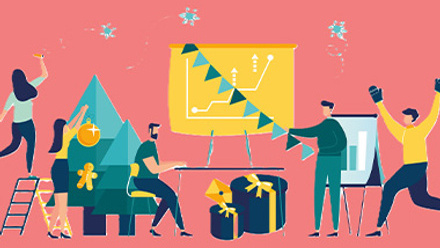5 ways recognition technology can help change workplace behaviour
Companies approach recognition in different ways. Some see it as a standalone initiative rather than as part of their organisational culture. But those that understand the true value of staff recognition integrate it into the everyday employee experience and, as part of this, recognition technology is key.
Not only does recognition technology make the giving and receiving of appreciation simple, becoming a seamless part of the employee’s daily flow of work, but it can do so much more.
It can remind managers about career anniversaries, and allow employers to provide rewards (or points towards a gift) as part of the recognition giving.
More specialist technology can even facilitate the creation of a ‘Yearbook’ – a customisable and interactive keepsake for employees celebrating a career milestone.
Making recognition easy
By leaning on recognition technology to make the act of giving and receiving appreciation easy (while still being meaningful and authentic), this can encourage behavioural changes which ultimately help deliver business objectives.
Here are 5 ways recognition technology can help change workplace behaviour.
1. Encouraging values-led behaviours. The most effective acts of recognition are linked to the company’s values. This values-based recognition reinforces what the company stands for and how employees are expected to behave.
And recognition technology can effectively support this approach by ensuring that whenever anyone gives recognition, they have to state which company value the recipient has displayed.
Referencing the value and the associated behaviours during public displays of recognition reinforces what ‘good’ looks like, encouraging the positive behaviours to be repeated across the organisation.
2. Strengthening relationships and sense of community. Making recognition giving as simple as possible through the technology encourages peer-to-peer recognition as well as frequent acts of recognition from manager-to-employee and employee-to-manager.
The result is stronger connections and a greater sense of community. And when recognition happens regularly, the odds of having a strong community increase by 508%.
3. Nurturing a modern leadership style. Organisations that teach employees the importance of appreciation-giving and how to do it the right way (with technology at the heart), are more likely to nurture modern leaders. These leaders are compassionate and appreciative in their approach and are more likely to get to know their employees as individuals.
4. Increasing instances of ‘great work’. When employees feel valued, appreciated and part of a community, they are more likely to want to go above and beyond. Research shows that aspirational levels of great work are 100% more likely in organisations with strong workplace communities.
5. Improving a sense of wellbeing. Employees who are frequently recognised are more likely to have a greater sense of wellbeing. Conversely, employees who don’t experience regular and meaningful recognition are more likely to feel demoralised and may suffer stress and anxiety.
When there is no consistent organisational strategy for recognition, the odds of burnout increase by 29%.
Creating a recognition culture
Technology has a fundamental role to play in creating a culture of integrated recognition. After all, giving and receiving recognition must be made simple and seamless if it’s to become a part of the everyday employee experience.
And when recognition technology is used to its full potential, its impacts are considerable, helping to shape employees’ behaviours in line with organisational goals.
Statistics taken from O.C. Tanner’s Global Culture Report
Supplied by REBA Associate Member, O. C. Tanner
Giving teams the integrated tools they need when, where and how they need them.








